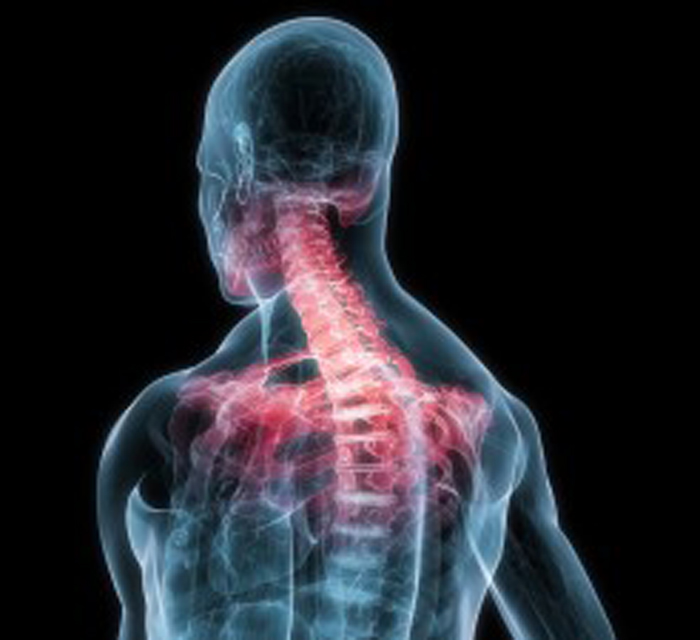A Retrospective Analysis of the Incidence of Severe Adverse Events Among Recipients of Chiropractic Spinal Manipulative Therapy
SOURCE: Sci Rep 2023 (Jan 23); 13 (1): 1254
| OPEN ACCESS |
Eric Chun-Pu Chu • Robert J Trager • Linda Yin-King Lee • Imran Khan Niazi
New York Chiropractic and Physiotherapy Centre,
EC Healthcare, 41/F Langham Place Office Tower,
8 Argyle Street, Kowloon, Hong Kong.

This study examined the incidence and severity of adverse events (AEs) of patients receiving chiropractic spinal manipulative therapy (SMT), with the hypothesis that < 1 per 100,000 SMT sessions results in a grade ≥ 3 (severe) AE. A secondary objective was to examine independent predictors of grade ≥ 3 AEs. We identified patients with SMT-related AEs from January 2017 through August 2022 across 30 chiropractic clinics in Hong Kong. AE data were extracted from a complaint log, including solicited patient surveys, complaints, and clinician reports, and corroborated by medical records. AEs were independently graded 1–5 based on severity (1–mild, 2–moderate, 3–severe, 4–life-threatening, 5–death). Among 960,140 SMT sessions for 54,846 patients, 39 AEs were identified, two were grade 3, both of which were rib fractures occurring in women age > 60 with osteoporosis, while none were grade ≥ 4, yielding an incidence of grade ≥ 3 AEs of 0.21 per 100,000 SMT sessions (95% CI 0.00, 0.56 per 100,000). There were no AEs related to stroke or cauda equina syndrome. The sample size was insufficient to identify predictors of grade ≥ 3 AEs using multiple logistic regression. In this study, severe SMT-related AEs were reassuringly very rare.
Subject terms: Adverse effects, Rehabilitation
There are more articles like this @
From the FULL TEXT Article:
Introduction
An adverse event (AE) is any unfavorable and unintended sign, symptom, or disease temporally associated with the use of medical treatment or procedure that may or may not be considered related to the medical treatment or procedure. [1] The current study focused on AEs related to spinal manipulative therapy (SMT) involving a thrust or impulse, a treatment commonly used by chiropractors to treat spinal conditions. [2] While mild SMT-related AEs such as transient soreness are better understood and reported to be common, there has been limited research examining the incidence of severe SMT-related AEs using a large sample supported by medical records data. [3]
Previous large studies have examined AEs occurring in relation to SMT from various professions, including chiropractic [4], Chuna (traditional Korean manual therapy) [5], and osteopathy. [6] Studies have estimated that severe AEs such as fractures, cauda equina syndrome, or cervical artery dissection occur between 1 per 2 million to 7 per 100,000 SMT treatments. [3] However, there have been several limitations in such studies, such as the use of a variety of customized definitions or grading systems for AEs, making this data challenging to interpret. [4] Some studies have relied on administrative claims data that lacks verification with the medical records [7], report AEs caused by individuals unqualified to administer SMT [8, 9], or do not include patients’ baseline symptoms prior to the AE. [10] Finally, randomized controlled trials of SMT may underestimate the incidence of AEs as the exclusion criteria in these studies may omit at-risk patients. [3]
A further challenge in this research is a lack of understanding of which variables predict severe AEs related to SMT. [3, 11] Previous research has identified predictors of mild or benign AEs, such as worker’s compensation or sick leave, higher level of disability, female sex, increasing age, and first SMT session. [12–15] However, it is not clear if these predictors apply to severe AEs. This is partly a limitation of sample size. Given that severe AEs are uncommon, none were analysed in the datasets of studies examining AE predictors. [12–14, 16] Limited information on risk factors for severe AEs can be gleaned from case reports, which, for example, have described SMT-related fractures in patients with osteoporosis or unrecognized cancer. [17]
SMT is effective for neck and low back pain [18, 19] and is recommended by multiple clinical practice guidelines. [20–22] While many disciplines utilize SMT, such as physical therapists and osteopaths, chiropractors may be the predominant users of this treatment worldwide. [23] The most common reasons patients visit a chiropractor include spinal conditions, primarily low back and neck pain. [24]
While there are several methods of ascertaining AEs in relation to SMT, previous studies suggest that medical records alone are insufficient to capture AEs. [25] One possible reason is that patients may not report AEs directly to the clinicians due to not wanting to introduce tension into the doctor-patient relationship. [25] In contrast, other research has shown that patients are more likely to report AEs when asked open-ended questions about their personal experiences via various solicitation methods outside the clinical setting. [26] As such, a range of data sources, including patient-driven complaints, complaints solicited via questionnaires, and data from medical records may help better understand SMT-related AEs.
Given the limitations of previous research examining SMT-related AEs, this retrospective study aimed to investigate the incidence and types of adverse events occurring among patients receiving chiropractic SMT in integrated clinics in Hong Kong by searching a database that combined several reporting methods for AEs. Our primary hypothesis was that severe AEs would be rare and occur in less than 1 per 100,000 SMT treatments.



Leave A Comment